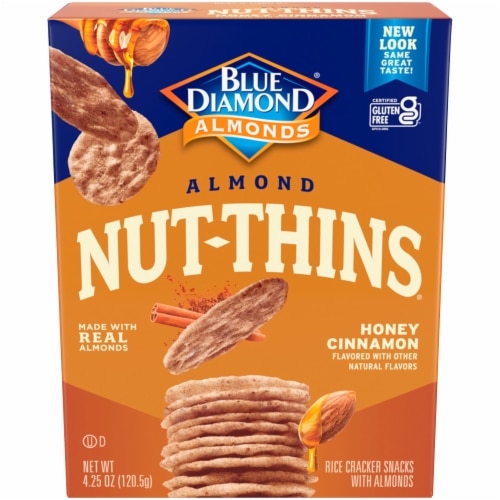[vc_row][vc_column][vc_column_text]It’s estimated that more than 3.3 million Americans cope with celiac disease, a gluten-triggered autoimmune disorder that causes digestive problems.
So, you may be wondering whether you can avoid becoming one of the roughly 1% of Americans with celiac disease. Unfortunately, as with so many disorders, celiac disease can’t be prevented. And just as it can’t be prevented, celiac disease can’t be cured.

“The exact cause of celiac disease isn’t known. This often makes it difficult for doctors to determine whether or not it can be prevented in some people,”
says Lompoc Valley Medical Center, located in Southern California.
However, someone with celiac disease can properly manage it by sticking to a
gluten-free diet.
What is celiac disease?
When someone with
celiac disease eats gluten — a protein found in wheat, rye and barley — their body launches an immune response that attacks the small intestine,
according to the Celiac Disease Foundation. These attacks damage the villi, which are small fingerlike projections that line the small intestine and promote nutrient absorption. When the villi are harmed, the body fails to adequately absorb nutrients.
Celiac disease, a genetic disorder, can develop after someone starts consuming food that contains gluten, the foundation says. According to the
National Library of Medicine, people who are most likely to be diagnosed with celiac disease:
- Have a relative with the disease
- Have Down syndrome, Turner syndrome or Williams syndrome
- Are white
- Are female
Some researchers suggest the
gut microbiome — your body’s ecosystem of life-giving microbes — influences the development and activation of the immune system, including the immune response to gluten in people with celiac disease.
An article published in 2023 by the journal Cells went so far as to declare that the
gut microbiome could play a “crucial role” in the development of celiac disease. But further research is needed to explore this connection, the article says.
Nonetheless, the article adds, “a deeper understanding” of the role of that the microbiome plays in celiac disease might help treat and prevent the disorder. For instance, additional research might lead to creation of microbiome-targeted therapies or complementary microbiome-based strategies for certain cases of the disease.
What are the symptoms of celiac disease?
The Celiac Disease Foundation website lists a host of
symptoms of celiac disease. For both children and adults, some of the symptoms are:
- Abdominal bloating and pain
- Anxiety
- Constipation
- Depression
- Diarrhea
- Fatigue
- Gas
- Headaches
- Nausea
- Vomiting
- Weight loss
“You may have celiac disease and not know it because you don’t have any symptoms,”
warns Johns Hopkins Medicine.
What are the long-term effects of celiac disease?
If left untreated or undiagnosed, celiac disease can lead to conditions such as:
- Cancer of the small intestine
- Gall bladder trouble
- Heart disease
- Infertility
- Lactose intolerance
- Liver failure
- Malnutrition
- Other autoimmune disorders
- Vitamin and mineral deficiency
The Celiac Disease Foundation notes that people with celiac disease face a two times greater risk of developing coronary artery disease and a four times greater risk of developing small-bowel cancer.
How is celiac disease treated?
Beyond Celiac, a patient advocacy and research organization, stresses that
celiac disease is a lifelong condition. In other words, you can’t “grow out of it.”
Fortunately, celiac disease itself likely won’t kill you, the group says. But side effects from untreated celiac disease can cause premature death. These include chronic anemia, malnourishment, osteoporosis andcertain cancers.
Because of its lifelong nature and its potential contribution to an early death, it’s vital to treat and control celiac disease. But how?
The Celiac Disease Foundation says that remaining on a gluten-free diet for life is the only way to treat the disorder. In general, the Mayo Clinic says,
avoid the following foods unless they’re labeled as gluten-free or they’re made with corn, rice, soy or another gluten-free grain:
- Beer
- Bread
- Cakes
- Candies
- Cereals
- Cookies
- Crackers
- Hot dogs and processed lunch meat
- Imitation meat or seafood
- Many snacks, including potato chips and tortilla chips
- Soups
- Pasta
- Pies
In addition, keep in mind that some prescription and over-the-counter medications may use wheat gluten as a binding agent. Dietary supplements that contain wheat gluten must put the word “wheat” on the label.
The role of vitamins and dietary supplements in celiac disease
The Celiac Disease Foundation points out that people with celiac disease often are deficient in calcium, fiber, folate, iron, magnesium, niacin, riboflavin, vitamin B12, vitamin D and zinc.
Therefore, a health care professional might suggest taking vitamins and dietary supplements to make up for these deficiencies, the foundation says. This may include a once-a-day, gluten-free multivitamin that does not exceed 100% of the daily value for vitamins and minerals.
“If untreated, these micronutrient deficiencies can contribute to neurological complications, psychiatric symptoms and bone alterations,” the foundation says.[/vc_column_text][/vc_column][/vc_row][vc_row][vc_column][vc_text_separator title="Featured Products" border_width="2"][vc_row_inner equal_height="yes" content_placement="middle" gap="35"][vc_column_inner width="1/3"][vc_single_image image="175403" img_size="full" alignment="center" onclick="custom_link" img_link_target="_blank" css=".vc_custom_1716829901103{padding-right: 7% !important;padding-left: 7% !important;}" link="https://www.vitacost.com/jovial-organic-brown-rice-pasta-gluten-free-penne"][/vc_column_inner][vc_column_inner width="1/3"][vc_single_image image="175402" img_size="full" alignment="center" onclick="custom_link" img_link_target="_blank" css=".vc_custom_1716829926717{padding-right: 7% !important;padding-left: 7% !important;}" link="https://www.vitacost.com/seitenbacher-gluten-free-bread-easy-baking-mix"][/vc_column_inner][vc_column_inner width="1/3"][vc_single_image image="175401" img_size="full" alignment="center" onclick="custom_link" img_link_target="_blank" css=".vc_custom_1716829950648{padding-right: 7% !important;padding-left: 7% !important;}" link="https://www.vitacost.com/emmys-organics-coconut-cookies-gluten-free-vegan-chocolate-chip"][/vc_column_inner][/vc_row_inner][/vc_column][/vc_row]
 “The exact cause of celiac disease isn’t known. This often makes it difficult for doctors to determine whether or not it can be prevented in some people,” says Lompoc Valley Medical Center, located in Southern California.
However, someone with celiac disease can properly manage it by sticking to a gluten-free diet.
“The exact cause of celiac disease isn’t known. This often makes it difficult for doctors to determine whether or not it can be prevented in some people,” says Lompoc Valley Medical Center, located in Southern California.
However, someone with celiac disease can properly manage it by sticking to a gluten-free diet.



